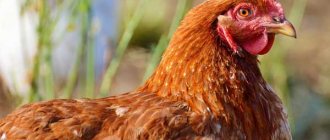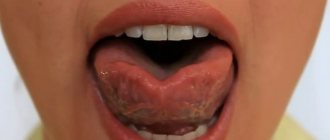In the history of a language, not only possible combinations of sounds change, but also the sounds themselves. Let's compare the phonetic system of modern Russian and Old Russian languages, classifying sounds according to their articulation and partly according to acoustic properties. Let's start with consonants at the present stage.
Note. Let us recall that articulation is the movement and interaction of the speech organs in the formation of sound.
In school teaching, children are usually taught to distinguish between consonants based on their voicedness/voicelessness and hardness/softness. We will consider a more complex classification that takes into account four characteristics:
- voice to noise ratio;
- place of education;
- method of education;
- presence of palatalization (softening).
Let's consider each point in detail.
The relationship between voice (tone) and noise
All consonant sounds, unlike vowels, contain noise. Some consonants are made entirely of noise, while others are a combination of noise and voice. Depending on the presence or absence of tone, as well as on the degree of noise, the following groups of consonants are distinguished:
- sonorant . They are sometimes also called semivowels, since in them the noise is insignificant, and the tone prevails over the noise: [р], [р'], [л], [л'], [м], [м'], [н], [ n'] and [j];
- noisy _ In them, noise predominates over tone, or there is no tone at all. Accordingly, noisy voiced [b], [b'], [v], [v'], [g], [g'], [d], [d'], [zh], [zh̄'], [ z], [z'] and noisy voiceless consonants: [k], [k'], [p], [p'], [s], [s'], [t], [t'], [f ], [f'], [x], [x'], [ts], [h'], [w], [w̄'].
Literature
- Ladefoged, Peter; Maddieson, Ian (1996). The Sounds of the World's Languages
. Oxford: Blackwell. ISBN 0-631-19814-8.
| Clicking | ||||||||
| Explosive | Implosive | |||||||
| Fricatives | Abruptives | |||||||
| Approximant | Other lateral | |||||||
| Trembling | Coarticulated approximant | |||||||
| Single-strike | Coarticulated fricatives | |||||||
| Lather. frikate. | Africates | |||||||
| Lather. sonants | Bifocal labiovelar | k͡p | ɡ͡b | ŋ͡m | ||||
| This is a draft article on phonetics or phonology. You can help the project by adding to it. |
Place of education
When pronouncing consonant sounds, a barrier is formed in the speech organs, which is overcome by the air stream exhaled from the lungs. This obstacle occurs with the participation of an active, i.e. moving, organ of speech (tongue or lower lip) and a passive, i.e. fixed or sedentary organ (upper lip, teeth, alveoli, hard or soft palate).
According to the active organ, all consonants are divided into labial and lingual . Among the latter, they are divided into front-lingual, middle-lingual and posterior-lingual , depending on which part of the tongue plays the main role in articulation.
If we also take into account passive organs, we can construct a more detailed classification.
Thus, labial consonants are divided into two groups:
- labial-labial , when pronounced, the lower and upper lips close: [b], [b'], [p], [p'], [m], [m'];
- labiodental , which are formed by bringing the lower lip and upper teeth together: [v], [v'], [f], [f'].
Linguistic consonants are:
- anterior lingual dental , when the tip of the tongue closes or approaches the upper teeth: [d], [d'], [t], [t'], [s], [s'], [z], [z'], [ l], [l'], [n], [n'], [ts];
- anterior lingual palatodental (alveolar) , during the formation of which the front part of the tongue rises to the alveoli - the tubercles between the front upper teeth and the palate: [р], [р'], [ш], [ж], [ш̄'], [ж̄ '], [h'];
- midlingual midpalatal , in the articulation of which the middle part of the tongue is involved, moving closer to the middle part of the palate: [j];
- posterior lingual posterior palatal , formed by the interaction of the back of the tongue with the posterior palate: [g], [g'], [k], [k'], [x], [x'].
Consultation “Peculiarities of sound production in cases of violation of the structure of the jaw and dentition”
Oleinik Elena Nikolaevna
Consultation “Peculiarities of sound production in cases of violation of the structure of the jaw and dentition”
Consultation.
Features of sound production in cases of violation of the structure of the jaw and dentition.
Prepared
teacher-speech therapist MBOU "Secondary School" in the village of Voyvozh: Oleynik E. N.
According to world statistics, the number of speech disorders in children and adolescents caused by myofunctional disorders is growing, and therefore the relevance of this problem is becoming global.
It is the speech therapist who is often the first specialist to whom parents of children with myofunctional abnormalities turn for help, since speech dysfunction caused by these problems is the most obvious and significant aspect of the child’s developmental delay for parents.
When identifying such deviations, it is very important to explain to parents the complex root cause of the disorders , and not just a purely speech problem, and to promptly give the child the correct diagnosis, which may require consultation with an orthodontist , dental surgeon and otolaryngologist.
The speech therapist’s knowledge of the features of the articulatory apparatus, including the growth and structure of the dental system , characteristic of certain age periods of a child’s development, helps to promptly identify risk factors for the occurrence of malocclusions and, accordingly, the causes of mechanical dyslalia. As a rule, risk factors for the formation of such disorders are laid down in a child at a very early age, during the so-called milk (or temporary)
bite and are consolidated in the form of bad habits, dysfunctions and parafunctions associated with the work of the muscles of the prioral region, the influence of which on the formation of the
dentofacial system is especially significant .
The dentofacial system , like other systems of the human body, is functional, self-regulating, capable of adapting to changing external conditions. Working closely with the orthodontist leads to better correction results. Indeed, often, not suspecting that the true cause of the formation of speech disorders is due to an anomaly in the dentoalveolar system , the speech therapist literally comes to a dead end when producing and automating sounds . Similar errors can occur, for example, with deep incisal overlap* - for this malocclusion pathology, a characteristic speech disorder will be sigmatism of hissing sounds , since with such an malocclusion the distance between the hard palate and the diaphragm (bottom of the cavity)
the mouth is not enough for normal articulation.
The most common anomalies of the structure of the oral cavity that require correction in preschool age: abnormal attachment of the frenulum of the tongue*, upper and lower lips*, small vestibule of the oral cavity*, supernumerary teeth. A shortened frenulum of the tongue is often inherited from parents or close relatives of children. At the same time, malocclusions can also be “inherited”
, when
the sounds [r] , [l], [s], as well as hissing sounds with a shortened frenulum of the tongue, are usually pronounced incorrectly.
To identify the causes of disturbances in the structure of the articulatory apparatus, a thorough examination of the child and a conversation with the parents are necessary, the key issues of which are covered in Appendix 1.
Disturbances in the natural development of the child’s maxillofacial area may be the result of bad habits. These include: sucking fingers*, tongue, various objects, biting lips and cheeks, habit of mouth breathing, inserting the tongue between the teeth when swallowing and speaking, incorrect speech articulation , as well as incorrect postural reflexes - poor posture , placing a fist under the cheek and throwing back the head during sleep. The result of such habits is underdevelopment of the lower jaw , narrowing and deformation of the dental arches , open bite, etc.
Prevention and elimination of bad habits is an important link in the prevention of both dental anomalies and speech disorders .
The greatest influence on the formation of the dentofacial system is exerted by the functions of breathing, swallowing, chewing and speech, since deviations from the norm of one or another function lead not only to disturbances in the formation of the bite, but also affect the health of the child as a whole.
Thus, under the influence of mouth breathing and excess pressure of the cheek muscles, the shape of the upper jaw - it narrows in the lateral areas. Simultaneously with the narrowing of the jaw , the shape of the nasal passages also changes, the nasal septum becomes curved, which accordingly leads to a change in the timbre of the voice. These deformations, in turn, contribute to the consolidation of the oral type of breathing.
Swallowing and chewing have a great influence on the formation of the dental system . When artificial feeding, it is very important to follow the following rules: *Pay attention to the slide.
The formation of the functions of chewing and swallowing will be delayed if artificial feeding is carried out incorrectly and when the child reaches one year of age, feed him only through the nipple. When examining such children, the infantile type of swallowing is often revealed. External signs: the child’s tongue at rest and when swallowing is located between the teeth of the upper and lower jaws ; mouth slightly open; the lower jaw is developmentally delayed ; The muscles of the cheeks and the orbicularis oris muscle are noticeably involved in the swallowing process, creating excess pressure on the dentition with each swallowing movement. As a result, a muscle imbalance is formed - the external pressure of the prioral muscles prevails over the pressure of the tongue from the inside. (Normally, the tongue, resting against the anterior third of the hard palate when swallowing, ensures and maintains the correct shape of the dentition .) These disorders lead to significant changes in the development of the maxillofacial region , as well as to impaired articulation , leading to incorrect pronunciation of individual sounds . Gymnastics helps normalize swallowing function (Appendix 2)
The chewing function in children with a violation of the normal relationship of jaw also cannot proceed fully, which affects the general state of development. Normally, when chewing, the mouth should be closed, food should be bitten off with the front incisors, and chewed alternately on the left or right side with the chewing teeth (molars)
.
With deep incisal overlap*, the child cannot chew food actively enough and eats for a very long time. An open bite* forces him to bite off food with his canine teeth. The same thing happens with early removal of the central incisors (more than a year before their natural replacement, if the child does not undergo replacement prosthetics. As a result, such children experience changes in the structure of the dental system , leading to articulation disorders .
Before starting correctional work, the speech therapist conducts an examination. When examining a child's oral cavity, check the slide. *
The main signs of a correctly formed bite are - you will see on the next slide. * Deviations from the norms described on the slide are signs of an incorrectly formed bite (Fig. 1)
.
. The absence of pronounced deviations from the norm in the structure of the articulatory apparatus in the child completely excludes the diagnosis of mechanical dyslalia. Apparently, the defective pronunciation of sounds occurs for some other reason. With incorrect pronunciation of sounds , but intelligible speech (dyslalia, with incorrect pronunciation and slurred speech (dysarthria, rhino-, tachy-, bradyllia)
and stuttering children need
an orthodontist consultation . In children who are treated only by a speech therapist, treatment periods are extended. But in order to avoid mistakes, it is important to take into account the degree of dependence of the correct articulation of sound on the specifically identified anatomy in the structure of the articulatory apparatus.
Thus, a short frenulum of the tongue can cause complete impossibility or incorrect pronunciation of the sound [r] , and sometimes hissing upper articulation. But it would be wrong to associate the defective pronunciation of sibilants, during the articulation of which the tip of the tongue is located at the lower incisors, with the presence of such an anomaly.
Or another example. A lateral open bite may cause lateral sigmatism rather than labiodental sigmatism . The latter can be predisposed by prognathia, when the lower lip, often involuntarily, is pulled under the upper incisors protruding forward, due to which instead of the sound [s] one hears [f] .
So, with a very short frenulum of the tongue, the production of the sound [r] is possible only after surgery, and overcoming interdental sigmatism must be preceded by the elimination of an open bite in the anterior region.
It is known that as a result of inserting the tongue between the teeth during an open bite, the child’s diction is impaired and it is difficult for him to pronounce whistling sounds . But a speech therapist will not be able to determine the correct pronunciation of sounds if the state of the articulatory apparatus, caused by disturbances in the structure of the dental system , does not allow this. Treatment in such cases must be carried out by an orthodontist. But despite the above, speech therapists are required to produce results on sound production .
Currently, modern standard means for myofunctional correction in speech therapy have appeared. Unfortunately, they remain inaccessible to us because they are not on sale and are an expensive pleasure. But I suggest you get to know them. Since knowing the principles of their operation when correcting certain violations, you can think about how to replace them.
Let's start with a violation of the pronunciation of the sound [r] . It is observed with a shortened frenulum of the tongue, narrowing of the jaws , deep bite, impaired mobility of the tip of the tongue. For children aged 3 to 5 years, training using a plate with a bead* is very effective. A bead attached to a wire holds the tongue in the physiologically correct palatal position. Having placed the plate in the oral cavity, the child immediately begins to instinctively roll the bead with his tongue along the hard palate, thus stimulating the tone of the lingual muscle. I replace it with a smaller walnut. Cork stopper. A large bead with two large buttons. (I use it individually for each baby)
Good results are obtained by using a plate with a bead for stuttering and dysarthria, since the action of the plate has a relaxing effect and gently relieves convulsive tension in the muscles of the speech apparatus (
By rolling the bead across the palate with the tongue, the child stimulates the root of the tongue, lifting it upward. If improper swallowing is complicated by breathing problems , then the child practices nasal breathing.
Articulation when playing sounds [t] and [d]
The pronunciation of the sound [t] is characterized by the withdrawal of the lower jaw simultaneously with the explosion of the lingual-palatal seal, producing the sound [t] . The distance between the upper and lower incisors is up to 5 mm. The tip of the tongue is raised to the necks of the upper incisors and forms a strong closure when pronouncing the sound [t] and less strong when pronouncing the sound [d] . In this case, the lateral edges of the tongue are pressed against the chewing teeth. Impaired pronunciation of these sounds appears with the following disorders :
open bite;
impaired upward mobility of the tongue;
insertion of the tongue between the teeth due to improper swallowing.
Before classes with a speech therapist, it is necessary to warm up the muscles that elevate the tongue for 30 minutes. It is effective to use a vestibular plate with a bead for this purpose. It is advisable to do this type of training at home every day for 10-20 minutes. I use a cork stopper. I place the cork between the teeth and ask them to pronounce the sound D. Articulation when playing sounds [sh] and [zh]
Hissing [sh] and [zh] belong to the group of lingual-anteropalatal sounds . The sound by the following articulation. The lips are slightly protruded forward; there should be a minimum distance between them, as well as between the upper and lower teeth. A gap is formed between the hard palate and the tongue, the lateral edges of the tongue close with the upper chewing teeth, and the extended tip of the tongue is raised, but does not come into contact with the hard palate. The sound by the same articulation, but the tongue is raised higher towards the hard palate.
The distortion of hissing sounds [w] and [zh] is promoted by :
deep bite;
prognathia;
lingual tilt of teeth (inward)
;
limited mobility of the tongue and lips.
For such disorders , complex training using a vestibular plate with a bead is effective. In addition to warming up the tongue, training of the orbicularis oris muscle is added here - the child is asked to firmly hold the plate with his lips, while the adult forcefully pulls it by the ring, as if taking it away, with intermittent short movements. At the next stage, you can complicate the task by asking the child to simultaneously roll a bead in the mouth.
A plate with a bead is also used for dysarthria, characterized by cuts in the articulatory muscles. Having placed the plate in the oral cavity, the child begins to intensively roll the bead with his tongue along the hard palate, thereby stimulating the tone of the lingual muscle. You can use this plate both during classes with a speech therapist and at home. I replace it with a walnut, a cork stopper, or a bead between the buttons.
Articulation when playing sounds [s] and [z]
These sounds belong to the group of lingual-dental sounds . When they are pronounced, the upper and lower incisors are brought closer together by approximately 1-1.5 mm and are located either in the same frontal plane or the lower incisors are slightly more lingual. The tongue in the middle part is raised and expanded. The tip of the tongue rests on the lower incisors, and its lateral edges are adjacent to the palatal surfaces of the upper lateral teeth. A longitudinal V-shaped groove is formed in the middle of the back of the tongue. Passing through it, a stream of air creates a pronounced whistling sound . The formation of the sound [z] differs from the articulatory structure of the sound [s] by a slight elevation of the back of the tongue to the hard palate and vibration of the vocal cords. The clarity and purity of the sounds [s] and [z] depend on the width of the speech gap - the gap between the upper and lower incisors when pronouncing these sounds . If the gap is made slightly wider, the consonant sound [s] will be less distinct, with a whistling noise.
Impaired clarity of sounds [s] and [z] is caused by labiodental stigmatism - a violation of the correct pronunciation of whistling sounds . When pronouncing the sound [s], the lower lip is pulled towards the upper incisors, “deforming”
speech gap.
With interdental sigmatism, the tongue is placed between the upper and lower incisors and instead of a whistling tone, a lisp is acoustically formed. Dental of the tip of the tongue in which it, resting against the upper incisors, closes the exit of the air stream.
Violation of the pronunciation of sounds is observed when:
open bite;
crossbite;
poor tongue mobility;
mouth breathing;
swallowing with the tongue resting on the lower jaw (the so-called infantile type of swallowing)
.
For children under 5 years of age, the use of a tongue plate with a flap is recommended *
Made of transparent hypoallergenic material, which helps control the position of the tongue. If the child has an open bite and during the speech therapist’s production of sound (with interdental sigmatism )
cannot give his tongue the desired position, then the plate flap will prevent the tongue from moving between the teeth,
thus facilitating The plate rests freely on the vestibule of the mouth in front of the teeth and is held in place by the closing reflex of the lips. This reflex is strengthened during daytime wearing (2 hours a day)
. I use the outer part of a pacifier, a pacifier ring, and one large button with a bead.
To eliminate the symptoms of underdevelopment of the lower jaw , a complex of myogymnastics is prescribed, see the appendix, but supplemented with the use of soft or hard (for protrusion of the upper teeth)
vestibular plate with a visor.
The plate promotes the advancement of the lower jaw forward , normalizes its horizontal growth, and, consequently, the balance and position of the head relative to the spine.
Once again I would like to draw your attention to the relationship between dental anomalies and postural disorders
The risk of developing dental anomalies is directly related to poor posture . And this factor should not be underestimated and wait until everything works out on its own.
The habit of a child sleeping on his back, with his head thrown back or tilted to his chest, leads to impaired growth of the lower jaw and deformities of the spine in the cervical region. Improper sitting at the table causes asymmetrical changes in the shoulder girdle, which in turn can lead to the formation of a crossbite.
Children with asymmetry of shoulders and shoulder blades (Fig. 20)
it is necessary to refer for
consultation to an orthodontist and orthopedist. Disproportion in the growth of the jaw bones, regardless of the cause, in each specific case changes the configuration of the facial skeleton.
From the above it follows that the effectiveness of the results of speech correction depends on the correctly constructed algorithm of the speech therapist’s work and his interaction with related specialists. Before starting work with a child with speech disorders , a speech therapist must have an opinion from specialists such as a dental surgeon and an orthodontist. Unfortunately, today not all speech therapists, when starting to work with children, have the opportunity to obtain reliable information about the state and functions of the child’s articulatory apparatus from the relevant specialists. This is hampered by a number of organizational shortcomings: for example, in the standard form for referral to a speech therapy group there is no column about the condition of the articulatory apparatus, the presence of a report from an orthodontist and a dental surgeon.
Unfortunately, it must be admitted that in recent years preventive work with preschool children has completely dropped out of the orthodontist’s activities, while, according to the order of the Ministry of Health and Social Development of the Russian Federation dated May 14, 2006 No. 289, the orthodontist is obliged to carry out preventive, therapeutic and diagnostic working with children from the first months of life. Unfortunately, in our city there is no orthodontist at all.
Method of education
The method of formation of consonant sounds is understood as the method of overcoming an obstacle in the speech organs by an air stream. On this basis, the consonants of the Russian language are divided into:
- stop (explosive) . They are formed if the speech organs completely close in the path of the air stream. The air, meeting such a barrier, breaks through it sharply, with force. These are the sounds [b], [b'], [p], [p'], [g], [g'], [k], [k'], [d], [d'], [t] , [T'];
- fricatives (frictional) . When articulating them, the organs of speech do not close completely, but only come closer, and the air stream passes through the gap between them: [v], [v'], [f], [f'], [zh], [zh'], [ z], [z'], [s], [s'], [j], [w], [sh̄'], [x], [x'];
- affricates (stop-frictional) , the articulation of which takes place in two stages. At the first stage, the exhaled air overcomes the closed organs of speech. Further, unlike explosive sounds, the bow does not break immediately, but first passes into a gap through which the air stream continues to flow: [ts], [h'];
- closure-passage . When they are formed, a complete closure of the speech organs occurs, but the air not only breaks this closure, but also partially bypasses it - either through the nasal cavity ( nasal sounds [m], [m'], [n], [n']), or through the oral cavity on the sides of the barrier ( lateral consonants [l], [l']);
- trembling (vibrants) . When pronouncing them, the speech organs repeatedly close and open: [р], [р'].
Articulatory apparatus
All speech organs are divided into active and passive. Active ones are moving, passive ones are motionless.
The active organ is the lower lip, the passive organ is the upper lip. In other words, the lower lip approaches the upper; The consonants [p], [p'], [b], [b'], [m], [m'] are pronounced. The active organ is the lower lip, the passive organ is the upper teeth; The consonants [f], [f'], [v], [v'] are pronounced. These are labial consonants.
The active organ is the front part of the tongue, the passive organ is the teeth; The consonants are pronounced [t], [t'], [d], [D'b [s], [s'], [z], [z'], [ts], [n], [n'], [l], [l']. These are dental consonants.
The active organ is the front part of the tongue, the passive organ is the alveoli (bulges above the teeth - the very front part of the palate); The consonants [w], [iG], [zh], [zh'], [h'], [r], [r'] are pronounced. These are anteropalatal consonants.
The active organ is the middle part of the tongue, the passive organ is the middle part of the palate; pronounced yot [j] (yama, hedgehog, spruce, south - the first sound in these words is [j], i.e. [jaMb], [join], [jan'], [jyx]). These are midpalatal consonants.
The active organ is the back of the tongue, the passive organ is the palate; The consonants [k], [k'], [g], [g'], [x], [x'] are pronounced. These are velar consonants.
Causes
Sigmatism occurs in children for various reasons. It is impossible to say exactly what was the impetus for dysfunction of the passive or active organ of the articulatory apparatus. But it is possible to identify which organ’s work disrupts phonemic harmony and correctness of speech.
The main causes of whistling and hissing sigmatism are:
- Lack of formation of articulatory praxis
- Perceptual impairments
- Disorders of the innervation of the organs of articulation
- Sensorimotor disorders
- Anomalies in the development of speech organs, jaw and dental apparatus
- Other functional disorders
- Adenoids
- Malocclusion
- Lost baby teeth
The occurrence of sigmatism can be provoked by anatomical abnormalities:
- Violations of acts of biting, swallowing, chewing
- Neuritis
- Paresis of the mouth muscles
- Bulbar palsy
In this case, the aberration is of an organic nature. The place of innervation will be the cheeks, lips, jaws, tongue, facial muscles, pharynx, larynx, motor fibers. We are talking about pathologies of the cranial nerves. They are responsible for the activity of organs and their proper functioning. To determine which of them has dysfunction, you need to undergo audiography, nystamography, and electromyography. Based on the results of the study, build further work on the correction of speech disorders.
It is necessary to resort to brain examinations only in extremely difficult situations. As a rule, a speech therapist or defectologist is able to visually identify paralysis, underdevelopment of praxis and eliminate disturbances in the functioning of the articulatory apparatus without a complex medical examination.
Correction
To eliminate articulation defects, gymnastics, breathing exercises, and logorhythmics are used. The type of violation must be taken into account. It takes more time to correct dental and lateral sigmatism than to normalize phonation in interdental and nasal sigmatism.
Articulation gymnastics
The following articulation exercises are recommended:
- Fence
We make a wide smile, teeth are visible. We fix the position of the lips for a few seconds. Then we repeat the exercise 2-3 times.
- Mustache
The child holds flat, light objects (strips of paper, tubes, pen) with his lips.
- Inflating the balloons
The cheeks are involved. The child inflates and deflates his cheeks alternately.
- Rent a pencil
The kid blows on a pencil that lies on the table.
- Imitation of chewing
- Singing syllables and sounds.
Massage
- Spot
We vibrate with our fingers under the chin, under the tragus of the ears. Open and close your mouth alternately during the massage.
- Soft palate massage
We knead the palate with our fingers until we get a pharyngeal effect.
Exercises
Tongue strengthening exercises:
- Pancakes
Licking the mouth in wide, circular movements.
- Rain
Rhythmic slaps of the tongue on the lips.
- Biting the tip, back, sides of the tongue.
Tongue spreading exercises:
- Baking pies
Mechanical assistance to the tongue will be needed. Take the tongue with two fingers and fold it into a pie.
- Sleds
- Railway
Staging sounds
During speech therapy classes on sound production [C], the imitation method, working with a mirror, and the mechanical method are used.










